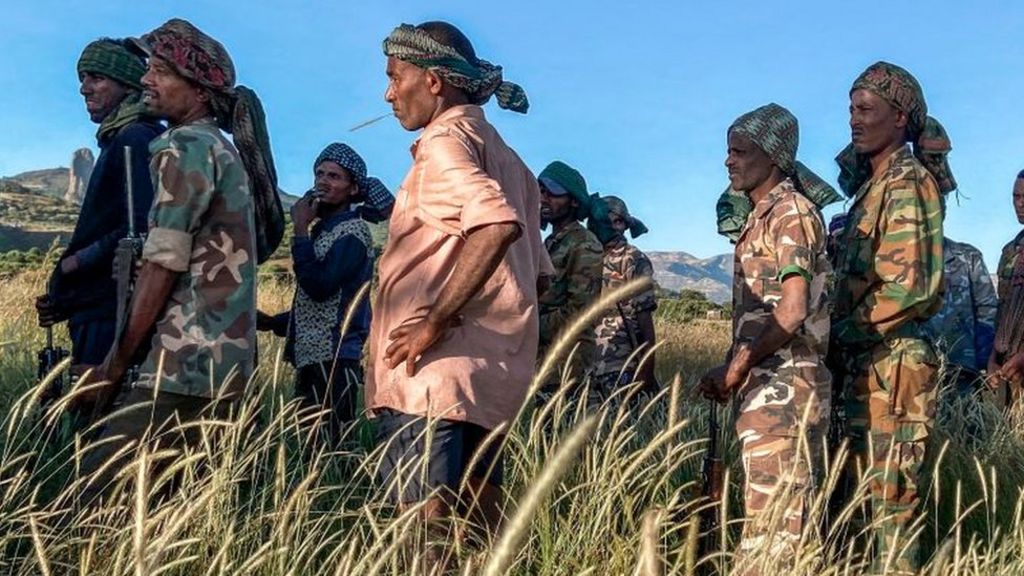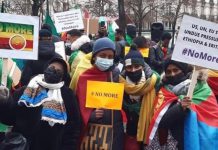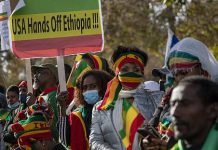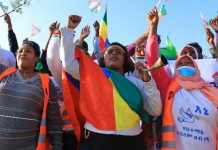Africa-Press Ethiopia
It has come as a shock to many that a civil war is raging in Ethiopia, with the Ethiopian government waging what it startlingly called a “law enforcement operation” in the Tigray region, branding the former ruling party in Ethiopia—the Tigray People’s Liberation Front (TPLF)—a criminal organization and vowing to destroy it. The conflict, which has already claimed thousands of lives and displaced tens of thousands, has caused trepidation in foreign capitals that it could lead to one of the largest state collapses in modern history, with significant implications for peace and stability in the Horn of Africa and beyond.
Despite the government’s declaration that it has already concluded the operation, it is far from certain that the capture of Tigray’s capital, Mekelle, by government forces will bring the conflict to an end any time soon—with the TPLF retreating to the mountains and, in all likelihood, positioning its fighting forces for a costly and drawn-out guerrilla war. There is a palpable fear that the war might induce civilians unfamiliar with the rules of war to actively engage in the conflict, and this could lead to a dire human tragedy. Evidence is emerging that the recent massacre in Mai-Kadra in Tigray state was perpetrated by vigilante groups—the Amhara group Fano and the Samri youth organization—with loose connections to their respective regional governments, the Amhara and Tigray states.
Ironically, the international community—which neglected many serious misgivings from credible corners about the suitability of the untested Abiy Ahmed as Ethiopia’s prime minister and welcomed (and likely enabled) the Nobel Committee’s imprudent awarding of the coveted Peace Prize to Abiy—was reduced to trying to persuade the peace laureate to refrain from escalating the conflict.
The African Union, the European Union, the United Nations Security Council, and leaders of several countries have expressed their angst about the looming disaster and are appealing to the warring parties to resolve their political differences through dialogue. Abiy has rejected peace talks with the TPLF until “the rule of law is restored,” and his ally and predecessor, Hailemariam Desalegn, faults those calling for dialogue as naive do-gooders with an “attitude of false balance and bothsidesism.” Desalegn argues that a power-sharing arrangement that may be brokered through dialogue is unsustainable, as that would absolve the TPLF of the crimes it has committed. However, it is difficult to take the self-serving bias of these arguments as anything more than a not-so-subtle justification for war, which the international community is trying to avert.
As recently as two years ago, Ethiopia’s economy was being touted as one of the fastest-growing in the world, with tremendous potential for further growth and development. How is it that a country that is still considered by powerful Western powers as the bulwark of their security policies in the Horn of Africa is suddenly facing an existential threat?
The current conflict in Ethiopia is a manifestation of the long-running clash between two opposing visions for the country. One camp fosters the view that a strong central government is the only guarantee for the unity and territorial integrity of the country; the other advances the idea that political power should be devolved from the center to the peripheries in a federal system granting regions significant autonomy. The clashing visions are essentially contestations over history and memory.
Those who promote a strong central government maintain that Ethiopia is an exceptional state that ought to be preserved at any cost (this includes Abiy and his supporters), while those in the opposing camp—notably the TPLF and the Oromo Liberation Front (OLF)—highlight the imperial legacy of the country, portraying it as a so-called prison of nations and nationalities that ought to be significantly reformed or dismantled.
The modern Ethiopian state was founded by the Amhara ruling class as an empire state toward the end of the 19th century. This state formation process coincided with and was partly facilitated by the so-called Scramble for Africa by the European colonial powers, with Emperor Menelik II (who ruled from 1889 to 1913) expanding his kingdom into what is today the southern half of the country, conquering the Oromos (the demographic plurality of the country), the Somalis, and dozens of other ethnic groups currently making up Ethiopia. Menelik identified himself as a member of the Amhara, a national group whose kings ruled over Abyssinia (Northern Ethiopia) for centuries, outmaneuvering the other key Abyssinian group, the Tigraway.
The establishment of the modern Ethiopian state through conquest has been a source of serious contestation, leading to countless resistance movements.
The establishment of the modern Ethiopian state through conquest has been a source of serious contestation, leading to countless resistance movements, with the conquered populations fighting to keep their identities, cultures, and languages—and with the unitarist camp justifying the wars of conquest as necessary campaigns to reunify territories that had been part of the ancient Ethiopian empire.
In particular, the Oromo, the Wolaita, and the Kafficho resisted Menelik’s advancing army, but they were outgunned and defeated, submitting to Menelik’s dominion over their territories. The other notable resistance movements against the Ethiopian state came during Haile Selassie’s regime in the mid-1900s, in the form of the first Woyane rebellion of 1943 in Tigray (which opposed the reorganization of the country into 14 provinces, as a measure to consolidate power at the center) and the Bale Oromo uprising in the early 1960s (which sought to prevent the government’s policy of settling the Amhara in the Oromo province of Bale). Both rebellions were defeated by the well-organized imperial army of Ethiopia, which used superior firepower against civilian populations.
The Ethiopian student movement of the late 1960s and the early 1970s—which was instrumental in overthrowing the imperial regime, and whose leaders represented the entire cross-section of the Ethiopian society—had as one of its key missions the transformation of the Ethiopian state from a hegemonic empire to a democratic polity that respected the rights of the various nations and nationalities making up the country.
Initially, the Derg—a committee of military personnel who took over the reins from Emperor Selassie—appeared ready to address plights of the nationalities neglected during imperial rule. However, the project was upended when the Derg adopted oppressive tactics and became a centralist authoritarian regime, leading to the formation of armed liberation movements, including the TPLF and the OLF.
It was hoped that the defeat of the Derg by the liberation forces in 1991 and the subsequent reorganization of the country along ethnonational lines would settle the destructive center-periphery disputes in the country. However, the TPLF-led Ethiopian government—while recognizing the cultural and linguistic rights of the subjugated nationalities—continued to utilize imperial tactics to suppress dissenting voices by non-Tigrayans, and this contributed substantially to its downfall in 2018.
Depending on which perspective one subscribes to, these wars were fought to either maintain the unity and territorial integrity of the ancient Ethiopian state or to remake or dismantle an empire and free the nations it has imprisoned.






